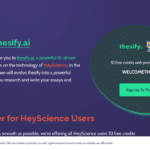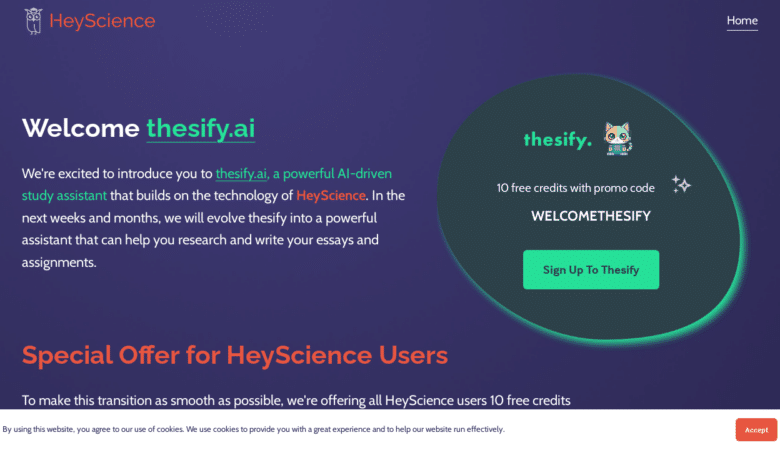In the rapidly evolving landscape of artificial intelligence, Elicit AI has emerged as a game-changing tool for researchers, academics, and knowledge seekers. This comprehensive review delves into the features, benefits, and potential impact of Elicit, an AI-powered research assistant that’s transforming the way we approach literature reviews and academic research.
What is Elicit AI?
Elicit (accessible at elicit.com) is an innovative AI research tool designed to streamline the process of finding, analyzing, and synthesizing academic papers. Developed by Ought, a research lab focused on using machine learning to assist in research and reasoning, Elicit leverages advanced language models to automate various aspects of the research workflow.
Key Features of Elicit AI
1. Intelligent Paper Search
Elicit’s core functionality lies in its ability to search through a vast database of over 125 million academic papers. Unlike traditional search engines, Elicit uses natural language processing to understand the context and nuances of your research question, returning highly relevant results.
2. Automated Literature Review
One of Elicit’s most powerful features is its capacity to generate automated literature reviews. By analyzing the content of numerous papers, Elicit can provide concise summaries, extract key findings, and highlight relevant information, saving researchers countless hours of manual review.
3. Data Extraction and Synthesis
Elicit goes beyond simple search and summarization. It can extract specific data points from papers, such as sample sizes, methodologies, or results, and compile this information into easy-to-read tables. This feature is particularly useful for meta-analyses and systematic reviews.
4. Question Answering
Researchers can ask Elicit specific questions about a topic, and the AI will scour its database to provide evidence-based answers, complete with citations to the original sources.
5. Research Question Exploration
Elicit assists in the early stages of research by helping users explore and refine their research questions. It can suggest related topics, identify gaps in the literature, and propose potential research directions.
The Impact of Elicit on Academic Research
Accelerating the Research Process
By automating time-consuming tasks like literature searches and data extraction, Elicit significantly speeds up the research process. This acceleration allows researchers to focus more on analysis, interpretation, and innovation rather than getting bogged down in the initial stages of information gathering.
Enhancing Comprehensiveness
The sheer volume of academic literature published each year makes it increasingly difficult for researchers to stay on top of all relevant work in their field. Elicit’s ability to quickly scan and analyze millions of papers ensures that researchers don’t miss crucial studies or emerging trends.
Democratizing Research
Elicit’s user-friendly interface and powerful capabilities make advanced research techniques more accessible to a broader audience. This democratization of research tools has the potential to level the playing field in academia, allowing smaller institutions and independent researchers to compete with larger, better-resourced organizations.
Facilitating Interdisciplinary Research
By making it easier to explore and understand literature from diverse fields, Elicit encourages interdisciplinary research. Researchers can more easily venture into adjacent fields, potentially leading to novel insights and cross-pollination of ideas.
How Elicit Compares to Other AI Research Tools
While there are other AI-powered research assistants available, such as Semantic Scholar and Google Scholar, Elicit distinguishes itself through its focus on automating the entire research workflow. Unlike tools that primarily focus on search, Elicit offers a more comprehensive suite of features designed to assist at every stage of the research process.
The Technology Behind Elicit
Elicit utilizes state-of-the-art language models, similar to those powering ChatGPT and GPT-3. These models are fine-tuned for academic research tasks, allowing them to understand complex scientific language and extract relevant information with high accuracy.
Limitations and Considerations
While Elicit is a powerful tool, it’s important to note some limitations:
Accuracy: Like all AI tools, Elicit can sometimes misinterpret information or make errors. It’s crucial for researchers to verify the AI’s outputs.
Access to Full Texts: Elicit’s ability to analyze papers may be limited by paywalls and access restrictions to full-text articles.
Bias in Literature: Elicit’s results are only as unbiased as the literature it’s analyzing. Researchers should be aware of potential biases in their field’s published work.
Overreliance: There’s a risk that researchers might over-rely on AI tools, potentially missing nuances that human analysis might catch.
The Future of AI in Academic Research
Elicit represents just the beginning of AI’s potential in academic research. As language models and machine learning techniques continue to advance, we can expect even more sophisticated tools that can:
Generate research hypotheses
Design experiments
Analyze raw data
Assist in writing and editing papers
Predict future research trends
How to Get Started with Elicit
To begin using Elicit, researchers can visit elicit.com and sign up for an account. The platform offers a free tier with basic features, as well as paid plans for more advanced functionality. New users are encouraged to start with simple research questions and gradually explore Elicit’s more complex features.
The Impact on Research Productivity
Early adopters of Elicit report significant improvements in their research productivity. Some users claim to save several hours per week on literature reviews and data extraction tasks. This time savings allows researchers to take on more projects, dive deeper into analysis, or achieve a better work-life balance.
Ethical Considerations
As with any AI tool in academia, there are ethical considerations surrounding the use of Elicit. Researchers must ensure they’re using the tool responsibly, giving proper credit to original authors, and not allowing the AI to replace critical thinking and analysis. Institutions and journals will need to develop guidelines for the appropriate use of AI research assistants in academic work.
Integrating Elicit into Research Workflows
To maximize the benefits of Elicit, researchers should consider how to best integrate it into their existing workflows. This might involve:
Using Elicit for initial literature searches and question exploration
Employing the tool to generate preliminary literature reviews
Utilizing Elicit’s data extraction features for meta-analyses
Cross-referencing Elicit’s findings with traditional research methods
By thoughtfully incorporating Elicit into their processes, researchers can enhance their productivity without sacrificing the rigor and depth of their work.
In conclusion, Elicit AI represents a significant leap forward in the application of artificial intelligence to academic research. By automating many of the time-consuming aspects of literature review and data synthesis, Elicit empowers researchers to work more efficiently and comprehensively. As the tool continues to evolve and improve, it has the potential to fundamentally change how we approach scholarly research, opening up new possibilities for discovery and innovation across all fields of study.








